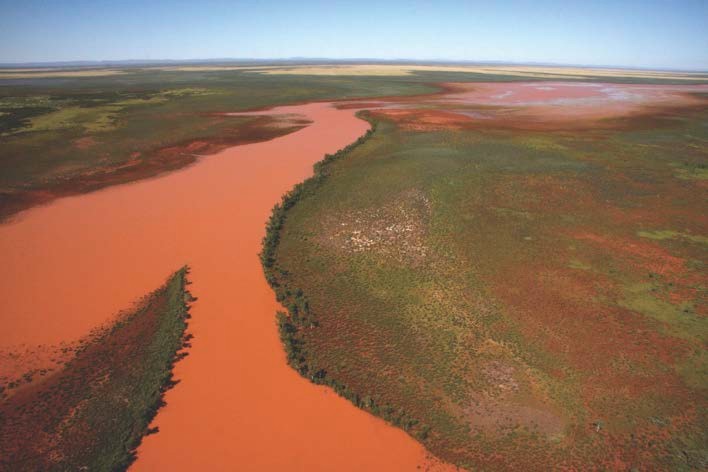Evidence for shift in long-term hydrology of Fortescue Marsh

by Simon Walker (OzEWEX)
The Fortescue Marsh in northwest Australia is a nationally significant wetland that acts as a terminal basin in one of the largest and most economically important iron-ore deposits in the world. In a new study, Alexandra Rouillard and colleagues of the University of Western Australia present evidence for a shift in the long-term surface hydrology of the system.

Aerial view of Fortescue Marsh. (photo: Alexandra Rouillard
Their research, published in Hydrology and Earth System Sciences, reports on a 100-year (1912-2012) reconstruction of the inundation regime for the largest inland wetland of northwest Australia.
“Our approach couples understanding of surface hydrology, remote sensing modelling and climate science to better understand the ‘expression’ and system memory of extreme hydroclimatic variability in the semi-arid Pilbara region.”
The researchers conclude that the last 20 years have been exceptionally wet, and that the study provides a much-needed reference to understand the resilience and stability of arid floodplains and tropical drylands in the face of any future changes in hydrologic regimes.
“This baseline directly informs the management of ecological water requirements, which has been a considerable challenge in such remote and highly dynamic environments. It will enable more informed management decisions around water requirements and impacts of mining activity.”
According to the researchers, the results can also inform climate modelling and regional predictions and improve the understanding of large scale drivers of moisture delivery for the assessment of flood and drought risk in the future.
Reference: Rouillard et al, Impacts of high inter-annual variability of rainfall on a century of extreme hydrologic regime of northwest Australia (link)
